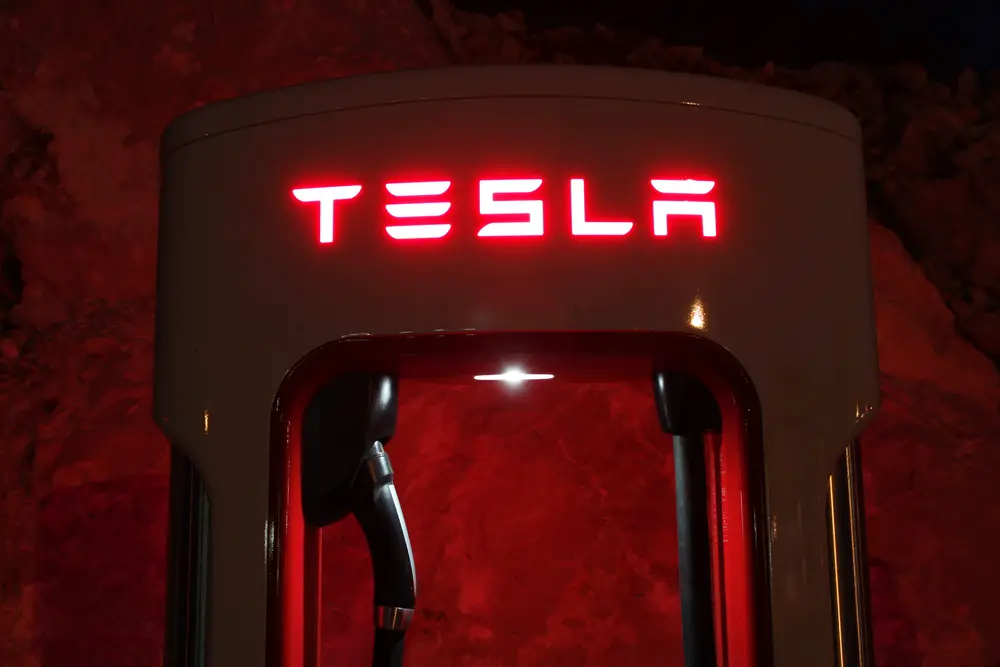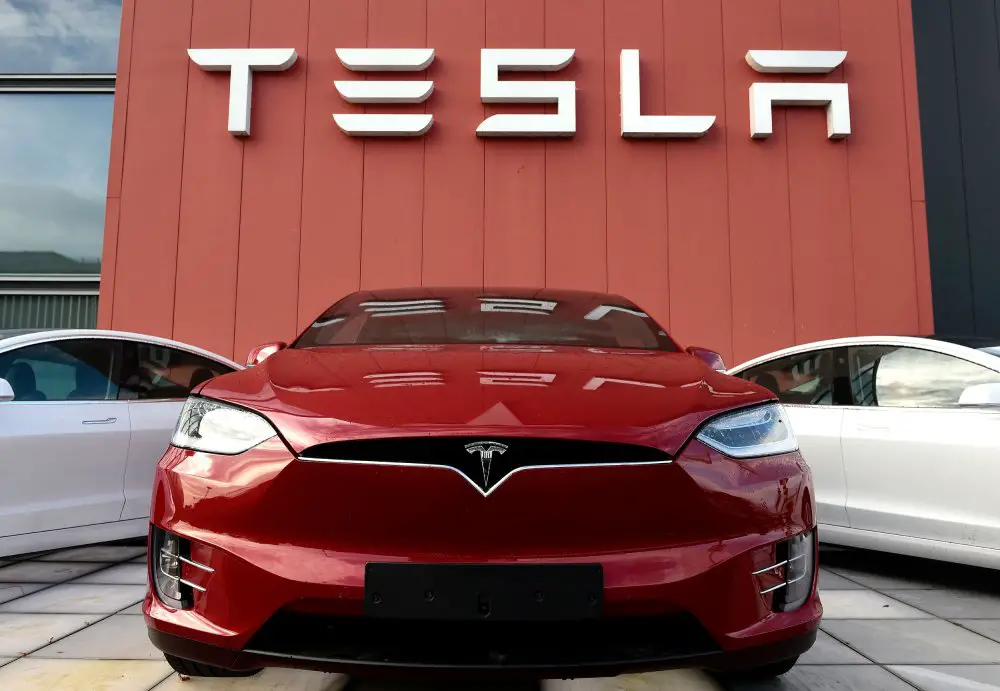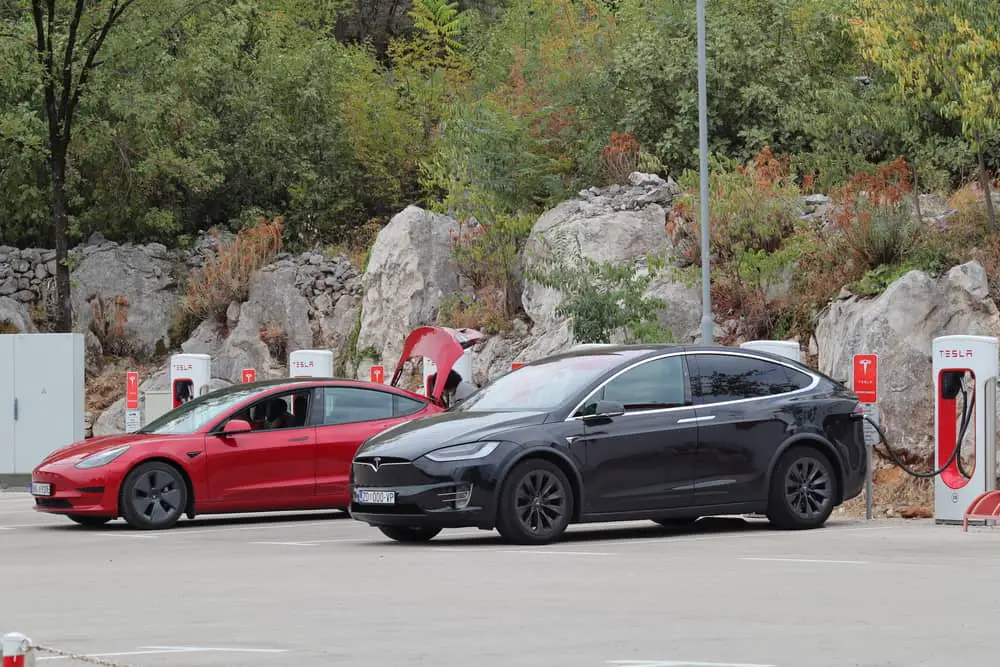Tesla owners often find themselves faced with the question of how low they should let their electric vehicle’s battery get.
Proper battery management is an important aspect of optimizing the performance and longevity of your Tesla.
Quick Answer:
It’s generally advised not to regularly let a Tesla battery level drop below 20% as it can stress the battery and affect lifespan. For daily use, Tesla suggests charging only up to 80-90% to maintain battery health.
Batteries, particularly lithium-ion batteries, have unique characteristics that can impact their performance over time.
Understanding these characteristics can help Tesla drivers make informed decisions about how to properly manage their batteries to ensure they get the most out of their vehicles.
Understanding Tesla Battery Basics
Battery Degradation
Battery degradation is a natural process in which the capacity of a battery decreases over time. For Tesla and other EVs, this means the range of the vehicle gradually decreases.
The degradation rate varies depending on how the vehicle is used, ambient temperature, and charging habits. Tesla’s battery technology is known to be quite resilient, with many owners reporting minimal degradation even after significant usage.
State of Charge (SOC)
State of Charge (SOC) refers to the percentage of energy available in the battery at a given time. It is important to be aware of your Tesla’s SOC to know how far you can drive before needing to charge.
Generally, it is recommended to maintain the SOC within a certain range (e.g., between 20% and 80%) to prolong battery life. This is because extreme low or high charge levels can increase stress on the battery and accelerate degradation.
Battery Management System (BMS)
The Battery Management System (BMS) is a critical component in any electric vehicle, including Teslas. It is responsible for managing various aspects of the battery, such as:
- Monitoring the voltage, temperature, and current
- Balancing the charge between battery cells
- Protecting the battery from overcharging, over-discharging, and overheating
- Estimating the remaining range and SOC
Tesla’s BMS uses advanced algorithms and sensors to manage the battery efficiently and helps to ensure both optimal performance and longevity.
How Low Should the Battery Get
Optimal Charging Range
It is generally recommended to keep your Tesla battery within a 20% to 80% state of charge (SoC) for everyday use.
This range helps maintain the battery’s health for long-term functionality. However, occasional trips or situations might require you to charge the battery up to 100%, and that’s perfectly acceptable. Just make sure not to make it a regular habit.
Furthermore, allowing the battery to reach extremely low levels, such as below 10%, can potentially harm its longevity.
Here’s a quick reference to the optimal charging range:
| Min. State of Charge | Optimal Range | Max. State of Charge |
|---|---|---|
| 20% | 20% – 80% | 80% |
Daily State-of-Charge Recommendations
Implementing daily state-of-charge recommendations for your Tesla will help provide a balance between battery health and driving range. For instance, you can:
- Set your daily charging limit to around 70% – 80% for regular use.
- Increase the limit to 90% – 100% when planning for longer trips or when fast chargers might not be readily available.
Tesla’s charging software includes an option to set a daily charging percentage, making it convenient for drivers to follow these guidelines. Just remember that it’s crucial to adjust your charging habits depending on your daily needs.
Factors Affecting Tesla Battery Life
Temperature Effects
Electric vehicle batteries, including Tesla’s, are sensitive to temperature changes. Extreme heat can accelerate degradation while freezing temperatures can limit their performance temporarily.
In moderate climates, a garage can help regulate temperature and protect the battery. Using cabin climate control wisely can also help maintain optimal conditions for your Tesla battery.
Charging Habits
The charging cycles you follow can significantly impact the battery life. It’s recommended to maintain the battery charge between 20% and 80% for daily use, as opposed to fully charging it to 100%.
This helps reduce stress on the battery cells, preserving their capacity over time. Additionally, avoid discharging the battery below 10% on a regular basis, as it may lead to faster degradation.
Driving and Idle Conditions
How you drive your Tesla and under what conditions also influences the battery life. Aggressive driving that demands high power output can put more stress on the battery, whereas a more conservative approach preserves its capacity.
Moreover, the idle time during which your Tesla is not in use can be optimized by adjusting the energy-saving settings to minimize battery discharge during these periods.
Maximizing Battery Longevity
Mindful Charging Practices
To extend the life of your Tesla’s battery, consider setting a charging limit between 80-90% for daily use. Charging to 100% should only be done when embarking on long trips. Avoid letting the battery level drop below 10-20% regularly to minimize deep discharge cycles.
Make use of public charging stations when necessary but prioritize charging at home as Tesla’s High-Power Wall Charger offers more controlled charging rates.
Regenerative Braking
Regenerative braking allows your Tesla to convert kinetic energy back into stored energy, thereby increasing overall efficiency and reducing wear on brake components.
Ensure your vehicle’s regenerative braking system is set to the “Standard” mode to maximize energy recovery, which in turn reduces frequent charging cycles and helps extend battery life.
Preconditioning
Preconditioning your Tesla’s battery before driving or charging is an excellent practice to optimize battery performance and longevity. By setting a departure time, the vehicle will automatically warm or cool the battery as needed, ensuring it is operating at its optimal temperature range.
Additionally, it is recommended to plug in your Tesla during particularly hot or cold weather conditions to help maintain the battery temperature within optimal levels.
Managing Battery Temperature
Battery temperature plays a significant role in battery longevity. Keep your Tesla’s battery within its optimal operating temperature range (around 20-30°C) to prevent accelerated degradation.
Try to park your vehicle in the shade, use sunshades, or park in enclosed spaces when possible to avoid exposing the battery to extreme temperatures. Furthermore, ensure your vehicle’s software is always up-to-date, as Tesla continuously improves battery management systems through over-the-air updates.
Tesla Models Comparison
Model 3
The Tesla Model 3 is a popular choice among electric vehicle enthusiasts, known for its range, efficiency, and affordability. The Model 3 comes in several variants, such as Standard Range Plus, Long Range, and Performance.
The Standard Range Plus Model 3 offers a battery capacity of about 54 kWh and an estimated range of 263 miles. To maintain battery longevity, it is recommended not to let the battery level drop below 20% regularly.
Tesla also advises leaving the vehicle plugged in when not in use to keep the 12V battery topped up.
Some key points about Model 3 battery care include:
- Charge to 80-90% for daily use
- Avoid letting the battery level drop below 20% frequently
- Plug in the vehicle when not in use to maintain the 12V battery
Model S
The Tesla Model S is a luxury sedan offering high performance and long-range capabilities. Like the Model 3, it also comes in different variants with varying battery capacities and ranges.
For instance, the latest Model S Plaid has a battery capacity of around 100 kWh and an estimated range of 396 miles. To maintain its battery health, similar guidelines apply as with the Model 3.
Important considerations for Model S battery care:
- Opt for daily charging to 80-90% capacity
- Do not let the battery level frequently drop below 20%
- Keep the vehicle plugged in to maintain the 12V battery when not in use
Warranty and Battery Replacement
Tesla’s Battery Warranty
Tesla offers an extensive warranty on their electric vehicle batteries. For the Model S and Model X, Tesla provides an 8-year or unlimited miles battery warranty, whereas the Model 3 and Model Y receive an 8-year or 120,000-mile warranty for Long Range and Performance models and 100,000 miles for Standard Range models.
The warranty includes protection against battery degradation below 70% capacity during this period.
It’s essential to follow Tesla’s recommendations for battery maintenance and use the Battery Management System (BMS) to ensure the warranty remains valid. The BMS helps to optimize the range, performance, and battery life.
You should:
- Keep your Tesla plugged in when not in use, especially during cold weather.
- Use Tesla’s Trip Mode when going on a long trip.
- Regularly update your vehicle’s software to improve the BMS performance.
Battery Replacement Cost
If your battery needs replacement outside of the warranty period, the cost can vary depending on the model and battery capacity.
Detailed battery replacement costs are not officially provided by Tesla, but some unofficial estimates are as follows:
| Vehicle Model | Battery Capacity | Estimated Replacement Cost |
|---|---|---|
| Model S | 85 kWh | $12,000 – $15,000 |
| Model X | 90 kWh | $15,000 – $18,000 |
| Model 3 | 75 kWh | $7,000 – $10,000 |
| Model Y | 82 kWh | $10,000 – $13,000 |
Of course, these costs may change over time as battery technology advances and costs decrease.
Following Tesla’s battery maintenance guidelines and utilizing the BMS can aid in maximizing battery life and minimizing the likelihood of needing a replacement. In case your battery requires service or a BMS reset, you should contact Tesla Service to diagnose and address the issue.
Charging Options
When it comes to charging your Tesla, you have two primary options: Home Charging and Supercharger Stations. Depending on your daily driving habits and accessibility, one of these options may be more convenient or cost-effective for you.
Home Charging
Home charging is the most common method for Tesla owners, as it allows for the utmost convenience and control. Simply plug your vehicle into a dedicated home charging setup when parked, and it will replenish the battery overnight.
There are different types of home charging equipment available to suit your needs, including Tesla’s proprietary Wall Connector, the Mobile Connector that comes with your vehicle, or third-party options. No matter which you choose, make sure a professional installs the equipment to ensure your safety.
A major advantage of home charging is the ability to monitor and control charging preferences through the Tesla Energy app. You can set your desired charging limit, schedule charging during off-peak hours for lower electricity rates, and track your charging progress in real time.
Supercharger Stations
While home charging is convenient for everyday use, sometimes you may find yourself in need of extra power, especially for long trips.
In these cases, Tesla Supercharger stations provide a fast and convenient option. Supercharging stations are strategically located near popular travel routes, so you can get back on the road faster.
Superchargers work by providing a high-power direct current (DC) charge directly to your battery, drastically reducing charging time.
Depending on your Tesla model, battery, and its current charge level, Supercharging can replenish your battery much faster than home charging: up to 80% charged in as little as 30 minutes.
To find a Supercharger station near your route, simply use your vehicle’s built-in navigation system. It will guide you to the nearest available station, along with an estimate of charging time needed.
Impact of Environment and Driving Conditions
Uphill Driving
Uphill driving can significantly impact your Tesla’s battery life. During uphill driving, your vehicle has to work harder to overcome gravity, resulting in higher energy consumption.
The electric powertrain needs more power to maintain speed and generate the necessary kinetic energy to go uphill. As a result, your battery will deplete faster than usual and may cause concern for how low you should allow your battery to get.
Inclement Weather
Inclement weather has a considerable effect on your Tesla’s battery life. Factors such as extremely cold or hot temperatures can lead to reduced efficiency of the electric powertrain and the heat pump system.
Cold temperatures, in particular, can decrease the battery’s capacity and its ability to accept a charge, while hot temperatures can lead to excessive battery drain due to the continuous use of air conditioning.
Additionally, driving in wet or windy conditions increases the rolling resistance and aerodynamic drag, causing the vehicle to demand more energy and depleting the battery faster.
Energy Efficiency
The energy efficiency of your Tesla is influenced by several factors, including driving habits, tire pressure, and vehicle weight.
To maximize your battery life, adhere to the following tips:
- Drive smoothly and avoid aggressive acceleration or braking.
- Maintain recommended tire pressure as per the vehicle’s manual.
- Remove unnecessary weight from the vehicle to improve overall efficiency.
Aerodynamic Drag
Aerodynamic drag is a major factor impacting your Tesla’s battery life. As your vehicle moves through the air, it experiences drag forces proportional to its speed.
These forces cause the electric powertrain to work harder to overcome air resistance, leading to increased battery consumption. To minimize aerodynamic drag, consider the following techniques:
- Drive at a reasonable speed to reduce air resistance.
- Close windows and sunroofs to improve airflow around the vehicle.
- Remove external accessories such as roof racks or bike carriers when not in use, as they can increase drag significantly.




